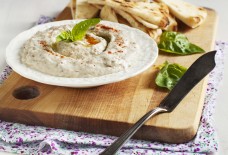Traditional Music in Morocco Series (Episode 7 of 7): Classical Sufi Music
By: Claire Boyle / Arab America Contributing Writer
Introduction:
The country of Morocco is one of many cultures, beautiful architecture, amazing cities, and it also has its own unique musical and dance genres that are borne out of numerous traditions. These traditions stem from many influences including the cultures of the Amazigh, Arabs, Berbers, Gnawa, Islamic syncretism, Sufism, and Europeans, and so many more. Morocco has the world-famous traditions of Chaabi/Fusion, Gnawa music, Arab-Andalusian Classical, and so many other genres. This seven-part series will explore the cultural, geographic, and historical backgrounds of these amazing genres and readers will get to experience some samples of each musical style as well.
In this seventh and final installment, we will be traveling to the city of Marrakech, to experience the exciting and spiritualistic sounds of Classical Moroccan Sufi Music.
Geographic Origins of Classical Moroccan Sufi Music:
Classical Moroccan Sufi Music has an interesting geographic background especially since it is one of the traditional music genres in Morocco that traces its origins to a very large and populous city. Typically, most types of traditional music in Morocco are more often than not found in towns that are within the Moroccan countryside, the mountains, and rural areas. However, in this case, Classical Moroccan Sufi Music traces its geographic lineage to Marrakech, a major city in southwestern Morocco, known for its world-famous souk (market in Arabic), the Jemaa al-Fnaa, and also for being Morocco’s ‘Red City’ due to most of its buildings being constructed out of red clay.
Historical and Cultural Origins of Classical Moroccan Sufi Music:
Who are the Sufis and how did their music come to be known and widely enjoyed in Morocco? Sufism is the mystical side of Islam, and its “history is traced to the very early days of the religion.” Sufis belong to what is called “tariqas or orders, and their congregations are based on a wali or Islamic saint, and these saints/teachers trace a direct line of succession to the Prophet Muhammed.” Sufis were originally aligned with “Sunni Islam and then during the late medieval period, they shifted to Shia Islam.”
So, how is Classical Moroccan Sufi Music performed? The tariqas or Sufi brotherhoods get together, and “music is an essential part of their spiritual tradition which seeks to reach a trance state to inspire a mystical fantasy.” Sufi music is also strongly focused on poetry and as a form of devotions, specifically, from Rumi and Hafiz among others. Since it is sometimes based on poetry, you will find Sufi music from the perspective of love songs. Sufi music is found in many countries throughout the globe; however, in the Arab World, it is most popular in Morocco.
Sufi music is typically performed with an oud (Arab lute), vocals, percussion, and sometimes with a reed flute called a “Ney,” and of course, the most essential element to it is that the poetic component produces a trance-like state.
Samples of Classical Moroccan Sufi Music: A Traditional Music Style of Morocco:
So, it is now time to experience the wondrous genre of Classical Moroccan Sufi Music, it is one to perhaps get you in a trance, and surely within a beautiful and spiritual headspace! Enjoy the samples below!
Conclusion:
Classical Moroccan Sufi Music is such a beautiful musical, cultural, and religious style because it is lively, and Sufis believe it gets one closer spiritually closer to the Prophet Muhammad and Allah. Classical Moroccan Sufi Music also has a lot of cultural and geographic history behind it because of its origins in urban Morocco. The Classical Moroccan Sufi musical style has a wonderful tradition because it is meant to achieve spiritual ecstasy and it brings out the more mystical side of Islam. These traditional musical styles elicit feelings of passion, and the reason listeners get these senses is that these sounds and rhythms are the amazing cultural expressions of humanity worldwide. It is the author’s hope that everyone got the opportunity to learn a little bit more about the enthralling style of Classical Moroccan Sufi, and perhaps, that you were able to tap your feet to the fun and rumbling sounds of traditional Moroccan music, dance, and worship!
This is the seventh and final episode in a series about some of the traditional music and (oftentimes) dance styles in Morocco. This series explored the cultural, historical, and geographic backgrounds of the musical and dance styles themselves and the group of people who brought these traditions to the forefront in Morocco. This series explored the traditional Moroccan musical and (oftentimes) dance styles including Reggada, Gnawa, Ahidus, Ahwash, Chaabi/Fusion, Arab-Andalusian Classical, and Classical Sufi music! Thank you for joining me on this exciting and amazing journey through many of the wonderful traditional music and dance styles in Morocco!
Check out Arab America’s blog here!









